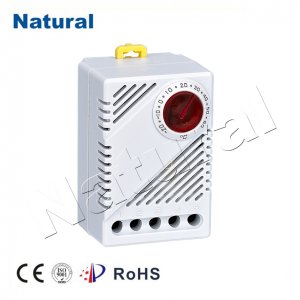Electronic thermostats have revolutionized the way we control and manage our indoor climate. These devices have come a long way from their humble beginnings and now play a crucial role in modern homes and businesses. In this article, we will delve into the world of electronic thermostats, exploring their history, benefits, and future possibilities.

A Brief History Electronic thermostats have their roots in the early 20th century when the need for automated temperature control arose. The first thermostats were mechanical and relied on bimetallic coils to expand and contract with temperature changes. This movement would then trigger a switch, turning the heating or cooling system on or off. However, it wasn’t until the mid-20th century that electronic thermostats made their debut. The introduction of electronic components allowed for more precise temperature control and the ability to program heating and cooling schedules. This was a significant advancement in terms of energy efficiency and comfort. The Advantages of Electronic Thermostats Precision Control: Electronic thermostats offer precise temperature control, allowing users to set their desired temperature down to the decimal point. This level of accuracy ensures that indoor environments are consistently comfortable. Energy Efficiency: Programmable electronic thermostats enable users to create heating and cooling schedules, optimizing energy usage. For example, you can set the thermostat to lower the temperature while you’re away from home and raise it before you return, reducing energy waste. Remote Access: Many electronic thermostats are now equipped with smart technology, enabling remote control via smartphones or computers. This feature allows users to adjust the thermostat settings even when they are not at home, which is both convenient and energy-efficient. Learning Capabilities: Some electronic thermostats have adaptive learning algorithms that analyze your temperature preferences and daily routines. Over time, they automatically adjust the temperature to maximize comfort and energy savings. Integration with Home Automation: Electronic thermostats can be integrated into larger home automation systems, allowing for seamless control of lighting, security, and other smart devices. This integration enhances the overall convenience and energy efficiency of a home. The Future of Electronic Thermostats The evolution of electronic thermostats continues, promising even more exciting features and capabilities: Artificial Intelligence (AI): AI-driven thermostats will become more common, analyzing data from various sensors to make real-time adjustments for maximum comfort and efficiency. Voice Control: Voice-activated thermostats are gaining popularity, making it even easier to adjust settings without lifting a finger. Energy Monitoring: Future thermostats may offer detailed energy consumption insights, helping users identify areas for further energy savings. Environmental Integration: Electronic thermostats will likely integrate with weather forecasts and outdoor temperature sensors to anticipate changes and adjust settings accordingly. Enhanced Compatibility: As more devices become smart and interconnected, electronic thermostats will continue to improve their compatibility with various heating and cooling systems. In conclusion, electronic thermostats have come a long way since their inception, offering precise control, energy efficiency, and convenience. With ongoing advancements in technology, the future of electronic thermostats looks promising, and they are set to play an even more significant role in our lives. As we embrace these innovations, we can look forward to more comfortable, energy-efficient, and eco-friendly indoor environments.